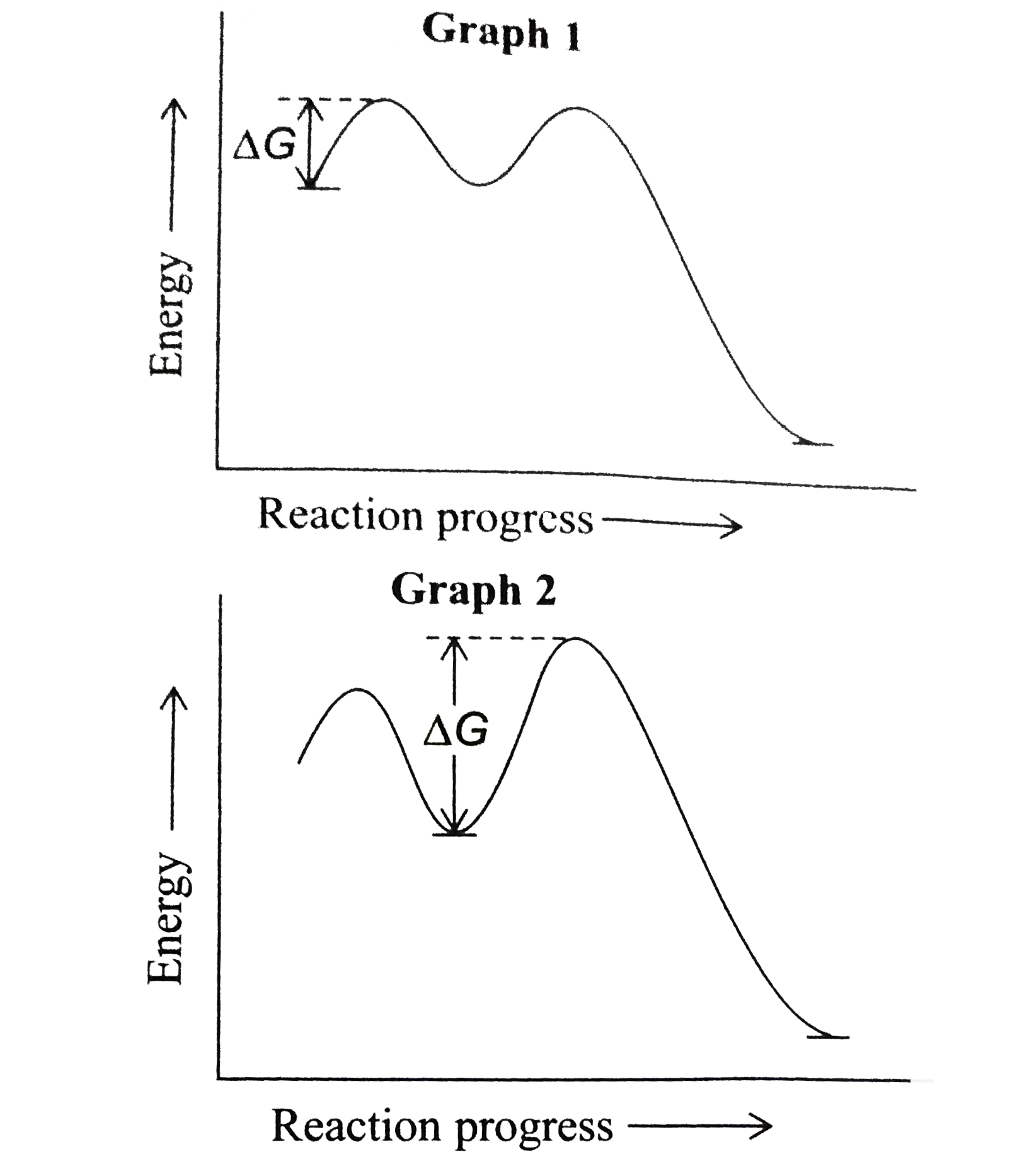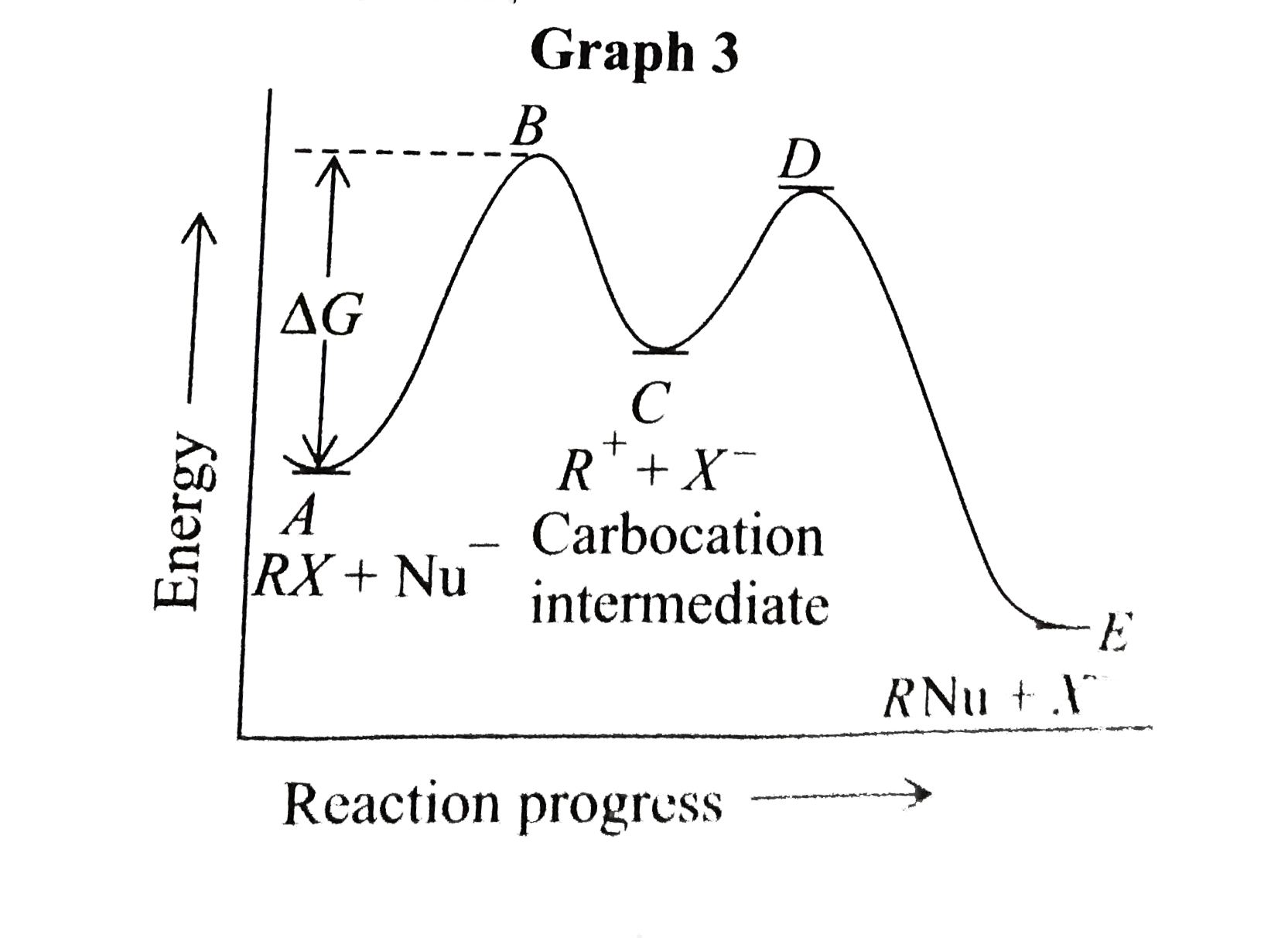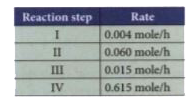Given the hypothetical reaction mechanism
 E and the rate as The rate determining step is
E and the rate as The rate determining step is
step I
step II
step III
step IV
The correct Answer is:D
Among the formation of B, C, D and E, the slowest step is the rate determining step. As formation of B, i.e. 0.002 mol/h per mole of A is the slowest step. Hence, step-(I) is the rate determining step.
Topper's Solved these Questions
Similar Questions
Knowledge Check

Consider the above reaction and answer A to E.
Which step is rate determining step?Aattack of nucleophile CH3OHBattack of electrophile H⊕Cattack of nucleophile H2ODattack of electrophile CH3For a hypothetical reaction, A+B+C→ Products, the rate law is determined to be rate =k[A][B]2. If the concentration of B is doubled without changing the concentration of A and C, the reaction rate:
AdoublesBincreases by a factor of fourCincreases by a factor of sixDdecreases by a factor of eightStatement-1: First step is always the rate determine step in the path of the reaction.
Statement-2: Study of kinetics of a reaction can report events only up to the rate determining step, not beyond that.AIf both the statement are TRUE and Statement -2 is the correct explanation of Statement-1:BIf both the statement are TRUE but Statement-2 is not the correct explanation of Statement-1CIf statement-1 is TRUE and Statement-2 is FALSEDIf statement -1 is FALSE and Statement-2 is TRUE
SN1 reaction is a first order nucleophilic substitution e.g.
CH3−CH3∣C∣CH3−Br+H2O→CH3−CH3∣C∣CH3−OH+HBr
The concentration of nucleophile does not appear in the rate law expression.
Reaction rate k[RX]
In a mulptistep organic reaction , the rate-limiting step is the slowest step . Rate determining step is represented by the following energy level diagram:
A reaction energy level diagram for an SN1 reaction .The rate limiting step is spontaneous dissociation of an alkyl halide to give a carbocation intermediate:

In SN1 reaction the hybridization changes in rate determination step. Select the correct change among the following:
View SolutionSN1 reaction is a first order nucleophilic substitution e.g.
CH3−CH3∣C∣CH3−Br+H2O→CH3−CH3∣C∣CH3−OH+HBr
The concentration of nucleophile does not appear in the rate law expression.
Reaction rate k[RX]
In a mulptistep organic reaction , the rate-limiting step is the slowest step . Rate determining step is represented by the following energy level diagram:
A reaction energy level diagram for an SN1 reaction .The rate limiting step is spontaneous dissociation of an alkyl halide to give a carbocation intermediate:

In the graph 3 for SN1 reaction the rate limiting step is the spontaneous dissociation of alkyl halide and is given by
View SolutionGiven the hypothetical reaction mechanism AI−−→BII−−→CIII−−→DIV−−→E and the rate as

Rate determining step is
View SolutionConsider the hypothetical reaction A+2B→AB2
it follows rate law, rate=k[A][B] hence, rate determining step is
View SolutionFor the hypothetical reaction 2A→3C , the reaction rate r in terms of the rate of change of the concentration is given by
View Solution

